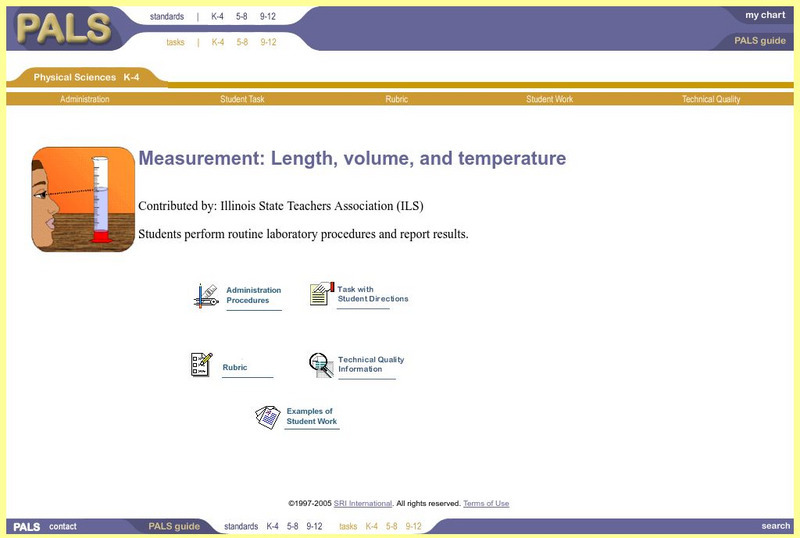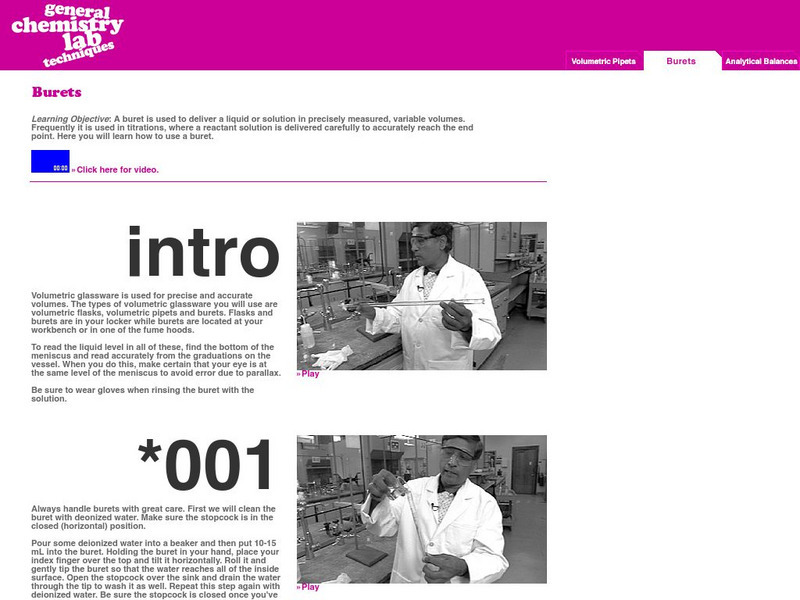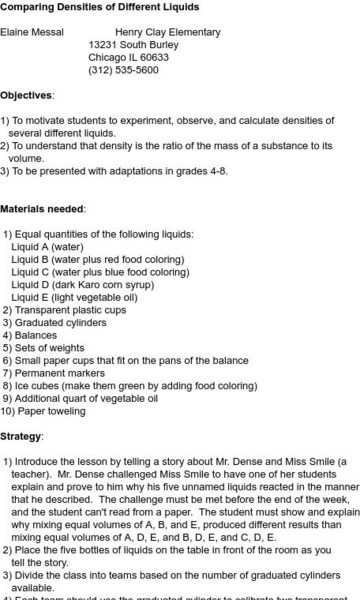Hi, what do you want to do?
Curated OER
Introduction to Polynomials
Students analyze the graphs of polynomial functions, examine vocabulary associated with polynomials, and determine the maximum number of real roots possible for a polynomial
Curated OER
Paper Gliders
Sixth graders study friction and drag. In this science lesson, 6th graders use different models of gliders and test to see which of the gliders fly the farthest. Students analyze their data and construct a graph.
Curated OER
Tomb Explorer/Temple Explorer
Fourth graders build an explorer vehicle which they program through an obstacle course to enter the tomb or temple to discover artifacts.
Curated OER
Electrical Resistivity
Students examine how materials oppose the flow of an electrical current. In this resistivity lesson students complete several experiments on the differences between resistance and resistivity.
Curated OER
Limiting Reagent
Students work in small groups with a small set of 8 nuts and 5 bolts to assemble into combinations of 1 nut: 1 bolt, and 2 nuts: 1 bolt. They explore the outcome and discuss. Then a student mixes two clear, colorless solutions together...
Curated OER
Why Are Cells So Small?
Students examine the relationship between cell surface area and the ability of materials to diffuse through a cell. They participate in an experiment in which they determine which materials diffuse easier than others. They complete...
Curated OER
Surface Tension and 3D Soap Films
Students are introduced to the concept of surface tension, its dependence on material composition, and how it can produce uniquely shaped surfaces.
Curated OER
Chemical or Physical?
Fourth graders make observations of the reactions that happens between calcium carbonate and various liquids. During the experiment the students determine if there is a chemical change, a physical reaction, or no reaction when they mix...
Curated OER
Get Down With Density
Students define density and observe that things that are less dense than water will float. Students find the density of copper, iron and aluminum
Curated OER
Optional Laboratory: Calculating Board Footage in a Tree
Students work together to complete an experiment calculating the amount of board footage in a tree. They record their data and answer questions at the end of the lesson. They create their own hypothesis as well.
Curated OER
Investigating Porosity and Permeability
Student describe porosity and permeability in sand, gravel, clay and potting soil. They experiment using different materials to discover the different porous substances and the permeability of the same substances. Pupils place data on a...
Curated OER
Can You Catch Your Breath?
Young scholars apply the the scientific method to an investigation.They develop and perform a scientific procedure for determining lung capacity. In addition, they write a report to display information and share their procedures with...
Curated OER
Avogadro's Law
Students study Avogadro's law and what it means in science. In this gaseous instructional activity students complete an Avogadro's law experiment.
Curated OER
Graphing Your Motion-Day 1
Ninth graders explore the concepts of motion, velocity and acceleration through graphing their own movement using LoggerPro. They become more familiar with the computer technology. Students explore graphing in real time and graph on...
PBS
Pbs Kids Afterschool Adventure!: Operation: Measuring How Much Activity Plan
Measuring fun is here! In this week's adventure, children will explore volume, capacity, and weight and learn new math vocabulary words as they practice measurement with real and virtual measuring tools. Each section of this weeklong...
Yale University
Yale University: General Chemistry Lab Techniques: Volumetric Pipets
A four-step tutorial shows students how to use a pipet in general chemistry lab to make "precise and accurate" volume measurements. View the full-length lesson via streaming video [9:46] or in segments.
Science Education Resource Center at Carleton College
Serc: Measuring Liquid Volume
In this lab, middle schoolers will measure and combine colored liquids to receive the expected results. The intended outcome would be to take primary colored liquids, measure them and combine them to create a "rainbow" colored set of...
TeachEngineering
Teach Engineering: Density Column Lab Part 1
In this first part of a two-part lab activity, students use triple balance beams and graduated cylinders to take measurements and calculate the densities of several common, irregularly shaped objects with the purpose to resolve confusion...
SRI International
Performance Assessment Links in Science: Measurement: Length,volume,temperature
This performance task tests students' ability to measure length, volume and temperature accurately in a lab setting.
PBS
Pbs Kids Afterschool Adventure!: Operation: Appetite for Fractions Activity Plan
In this week's Afterschool Adventure, Appetite for Fractions, children will explore fractions as they help create, divvy up, and serve a variety of real and virtual snacks.
Yale University
Yale University: General Chemistry Lab Techniques: Burets
Tutorial shows proper procedure for handling a buret and using this piece of laboratory equipment to measure liquid volume. View accompanying video full-length [18:00] or in segments.
Science and Mathematics Initiative for Learning Enhancement (SMILE)
Smile: Comparing Densities of Different Liquids
This lab experiment has students observe and compare the density of five different liquids while measuring mass and volume.
Science Education Resource Center at Carleton College
Serc: Mn Step: Study of Student Precision Using Volumetric Glassware
This activity is an exercise in using various lab equipment for measuring the volume of a liquid. Data is recorded on a spreadsheet and analyzed to see which tool offers the greatest precision.


























